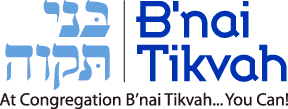If you call to mind the dramatic conclusion to Raiders of the Lost Ark, you’ll remember one of the bad guys playing the role of the Kohen Gadol, the High Priest. And if you listened carefully to his (bizarre) chant, you would have heard the words we recite just before we take the Torah out of the ark.
Gotta give Steven Spielberg some credit, even if it’s a different ark we’re talking about. This prayer is taken from the Zohar, the major Jewish mystical text, and it is described there precisely as a prayer to be recited when the Torah is going to be taken out of the ark.
It is introduced like this: “Rabbi Shimeon said: When we take the Torah scroll in a congregation, the gates of Heaven of mercy open themselves, and we arouse Love on High, and it is required that a person say the following…”
We can understand the idea that the heavenly gates of mercy are open at this particular time, so it makes sense that we would ask G-d to “fulfill the requests of my heart, and the hearts of all Your people Israel for good, and for life, and for peace.” (Amen). But what does it mean when it says, “and we arouse Love on High?”
This is kabbalah at its very best. Rather than seeing G-d as an impersonal force in the universe, G-d in the kabbalah is extraordinarily active and dynamic. In particular, G-d is responsive to our spiritual efforts. The deeper we focus in prayer and devotion, the more passionate G-d becomes in His relationship to us. If the passion rises enough, there will be an overflowing of G-d’s love for us, coming in the form of blessings, at the same time as our love for G-d overflows, and we experience spiritual ecstasy.
The prayer speaks repeatedly about emet, “truth” “a G-d of truth, whose Torah is truth, whose prophets are truth, and Who performs many acts of goodness and truth.” In the kabbalistic worldview, G-d has 10 facets (called “sefirot”) that reflect G-d’s inner workings. They unfold from a G-d of complete mystery and hiddenness to a G-d Whose Presence can be felt in our world (often referred to as “Shechinah.” The penultimate sefirah, the Foundation of all that is to be created, the conduit through which all of the evolving powers of G-d flow, is symbolized by emet, “truth” (composed of the first, middle and last words of the Hebrew alphabet, and also of the last letters of the words “bara el-kim laasot” the world that G-d “created in order to do.” (Gen 2:3).
In short, receiving the Torah, in the kabbalistic view, is a peak moment in a divine-human romance, where all the potential of Heaven, and all the potential of humanity, are on the verge of being simultaneously released.
